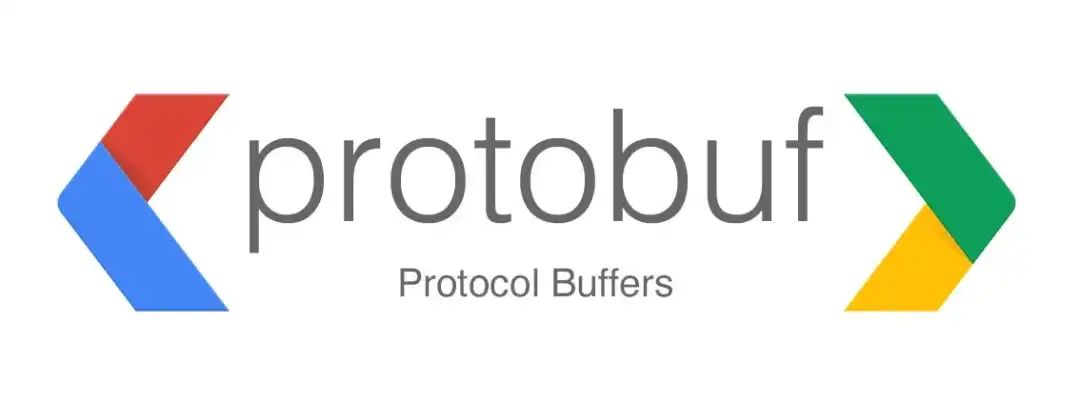各位准备好了吗!这一次,我们将深入探讨 Protocol Buffers(protobuf)及其在数据序列化中的超能力所在。

介绍
Protocol Buffers,也被称为 protobuf,是由谷歌开发的一种语言无关的二进制序列化格式。其主要目的是为了高效地序列化结构化数据,用于系统间通信和数据存储。

Protocol Buffers 的主要优势:
- 紧凑性:Protobuf 提供高效的序列化,生成较小的消息大小,提升带宽利用效率。
- 模式演进:Protobuf 支持模式演进而不破坏兼容性,允许对数据结构进行无缝更新。
- 高效的序列化和反序列化:Protobuf 提供快速高效的序列化,提升整体系统性能。
- 跨平台支持:Protobuf 允许不同平台和语言之间无缝交换数据。
这些优势使得 Protobuf 成为在 Go 应用程序中进行高效数据通信和存储的强大工具。
它比 JSON 和 XML 更好的地方:

XML,即可扩展标记语言,就像一张地图,用标签帮助组织和结构化数据。它以一种人类和机器都能理解的方式呈现信息。然而,XML 可能冗长并占用更多空间,这可能降低性能,使数据传输效率降低。
JSON,即 JavaScript 对象表示法,就像一个信使,使用简单的键值结构来表示数据对象。它因易于阅读和使用而在 Web 服务之间传输数据时变得流行。但 JSON 的基于文本的格式可能导致更大的文件大小,从而影响数据传输速度。
相比之下,Protocol Buffers(protobuf)在数据序列化领域脱颖而出。它就像一个魔术,将数据转换为紧凑高效的二进制格式。Protobuf 以快速的数据处理和适应变化的数据结构而闻名,并且在不破坏兼容性的情况下进行操作。它可以与不同的编程语言一起使用,并确保数据的可靠性。
总之,XML 和 JSON 各有用途,但如果您需要强大且高效的数据序列化解决方案,Protocol Buffer(protobuf)是首选。它提供紧凑性、速度、灵活性和兼容性,使其成为高效处理数据的首选方案。
在 Golang 中的序列化性能:Protocol Buffers vs. JSON
言归正传,让我们动手实践。
访问官方 Protocol Buffers GitHub 仓库(https://github.com/protocolbuffers/protobuf)下载与您操作系统兼容的编译器。
使用 .proto 文件格式定义一个 Protocol Buffers 消息模式。
syntax = "proto3";
package main;
option go_package = "/;msgmodel";
message MyMessage {
int32 id = 1;
string name = 2;
string email = 3;
}编译文件:
protoc — go_out=. ./*proto这个命令从 protobuf 模式生成 Go 代码绑定。--go_out 标志指定输出应为 Go 语言。这将生成一个 msg.pb.go 文件,其中包含您的 protobuf 模式所需的代码绑定。
在 Golang 中实现一个基准测试,使用 protobuf 和 JSON 对大型数据集进行序列化:
package main
import (
"encoding/json"
"github.com/golang/protobuf/proto"
"go-protobuf/model/message"
"log"
"testing"
)
const (
iteration = 10000000 //Number of iterations for the benchmark test
)
func generateDataset() []*message.MyMessage {
var dataset []*message.MyMessage
for i := 0; i < iteration; i++ {
data := &message.MyMessage{
Email: "johndoe@example.com",
Name: "John Doe",
Id: int32(i),
}
dataset = append(dataset, data)
}
return dataset
}
func BenchmarkProtobufSerialisation(b *testing.B) {
dataset := generateDataset()
b.ResetTimer()
for n := 0; n < b.N; n++ {
for _, data := range dataset {
_, err := proto.Marshal(data)
if err != nil {
log.Fatal(err)
}
}
}
}
func BenchmarkJSONSerialization(b *testing.B) {
dataset := generateDataset()
b.ResetTimer()
for n := 0; n < b.N; n++ {
for _, data := range dataset {
_, err := json.Marshal(data)
if err != nil {
log.Fatal(err)
}
}
}
}
func main() {
// Run the benchmark tests
testing.Benchmark(BenchmarkProtobufSerialisation)
testing.Benchmark(BenchmarkJSONSerialization)
}根据基准测试结果(如下所示),很明显,就速度而言,Protocol Buffers(Protobuf)的序列化性能优于 JSON。与 JSON 的序列化基准测试相比,Protobuf 的序列化基准测试完成时间明显较短。

内存性能比较:JSON vs. Protocol Buffers
在 Golang 中实现一个基准测试,比较使用 Protocol Buffers 和 JSON 处理大型数据集时的内存使用情况:
package main
import (
"encoding/json"
"github.com/golang/protobuf/proto"
"go-protobuf/model/message"
"log"
"runtime"
"runtime/debug"
"testing"
)
const (
iteration = 100000000 //Number of iterations for the benchmark test
)
func generateDataset() []*message.MyMessage {
var dataset []*message.MyMessage
for i := 0; i < iteration; i++ {
data := &message.MyMessage{
Email: "johndoe@example.com",
Name: "John Doe",
Id: int32(i),
}
dataset = append(dataset, data)
}
return dataset
}
func BenchmarkProtobufSerialisation(b *testing.B) {
dataset := generateDataset()
b.ResetTimer()
for n := 0; n < b.N; n++ {
for _, data := range dataset {
_, err := proto.Marshal(data)
if err != nil {
log.Fatal(err)
}
}
}
measureMemoryUsage(b)
}
func BenchmarkJSONSerialization(b *testing.B) {
dataset := generateDataset()
b.ResetTimer()
for n := 0; n < b.N; n++ {
for _, data := range dataset {
_, err := json.Marshal(data)
if err != nil {
log.Fatal(err)
}
}
}
measureMemoryUsage(b)
}
func measureMemoryUsage(b *testing.B) {
debug.FreeOSMemory()
var mem runtime.MemStats
runtime.GC()
runtime.ReadMemStats(&mem)
b.ReportMetric(float64(mem.Alloc)/1024/1024, "Memory_MB")
}
func main() {
// Run the benchmark tests
testing.Benchmark(BenchmarkProtobufSerialisation)
testing.Benchmark(BenchmarkJSONSerialization)
}尽管差异很小,但基准测试结果表明,与 Protobuf 序列化相比,JSON 序列化使用了更多的内存。平均而言,JSON 序列化消耗了约 0.2052 MB 的内存,而 Protobuf 序列化仅使用了约 0.2042 MB。尽管差异很小,但很明显 Protobuf 在内存使用方面更加高效。这意味着 Protobuf 的紧凑二进制格式有助于节省内存,使其成为处理大型数据集和提高性能的良好选择。

结论
现在是总结的时候了!!!
与在 Golang 中的 JSON 序列化相比,Protocol Buffers(protobuf)展现出了更优越的性能和内存效率。借助其紧凑的二进制格式和高效的序列化机制,protobuf 提供了更小的消息大小、提升了网络效率,并减少了带宽使用。此外,其模式演进能力允许对数据模型进行无缝更新。虽然 JSON 有其优势,但在需要高速和高内存效率的数据序列化场景中,protobuf 出类拔萃,实现了优化的数据传输和改善的系统性能。



































